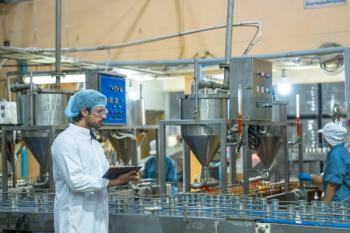
Best of the Week: Solving the Heterogeneity Problem, Polyethylene’s IR Spectrum, Coal Analysis, Microplastics
Key Takeaways
- Sample heterogeneity complicates spectroscopic analysis; strategies like spectral preprocessing and hyperspectral imaging help but lack universality. Future research should explore real-time feedback-controlled sampling and multi-modal data fusion.
- Polyethylene's IR spectrum reveals structural complexity, with HDPE showing split peaks due to crystalline regions. LDPE and LLDPE exhibit different peak behaviors, highlighting IR spectroscopy's power in identifying polymer types.
Top articles published this week include a video about the structural complexity of polyethylene, a news story about using near-infrared (NIR) and X-ray fluorescence (XRF) to classify coal types, and a look at microplastic analysis.
This week, Spectroscopy published a variety of articles highlighting recent studies in several application areas, including polymer analysis, coal analysis, and environmental analysis. Key techniques highlighted in these articles include infrared (IR) spectroscopy, X-ray fluorescence (XRF), and Raman spectroscopy. Happy reading!
In this tutorial article, sample heterogeneity is discussed, and how it introduces spectral distortions, complicating spectroscopic analysis and model calibration, especially in quantitative applications. Strategies like spectral preprocessing, localized sampling, and hyperspectral imaging help mitigate heterogeneity effects but lack universality (1). Future research should explore real-time feedback-controlled sampling, multi-modal data fusion, and physics-informed machine learning for improved heterogeneity management (1). Bridging optical physics with data-centric approaches may offer a comprehensive solution to the challenges posed by heterogeneous samples in spectroscopy.
An explainer video based on Brian C. Smith’s Spectroscopy article explores how infrared (IR) spectroscopy reveals structural complexity in polyethylene, a polymer often considered simple. Focusing on the split CH₂ rocking vibration in high-density polyethylene (HDPE), the video explains how crystalline regions create in-phase and out-of-phase vibrations, producing two peaks instead of one (2). Low-density polyethylene (LDPE), with bulky side chains, shows only a single peak because of reduced crystallinity, while linear low-density polyethylene (LLDPE) exhibits splitting similar to HDPE (2). The analysis further shows how side-chain length shifts peak positions, demonstrating IR spectroscopy’s power in identifying polymer types and subtle structural variations (2).
A recent study published in Optics & Laser Technology highlights how artificial intelligence (AI) can revolutionize coal quality assessment (3). Researchers in Romania combined near-infrared (NIR) and X-ray fluorescence (XRF) spectroscopy with machine learning to classify coal types and predict key quality indicators with exceptional accuracy. Using support vector machine (SVM) models and partial least squares regression (PLSR), they achieved R² values as high as 0.9997 and extremely low prediction errors for ash, volatile matter, and sulfur content (3). This approach addresses the challenges of coal variability, offering coking enterprises and other coal-dependent industries faster, more reliable, and automated quality assessments.
A study published in Environmental Pollution by Azari and colleagues highlights how colorants in plastics can significantly hinder Raman spectroscopy for microplastic analysis (4). The researchers found that pigments and dyes often generate strong fluorescence, masking the characteristic Raman peaks needed to identify polymers such as polyethylene or polystyrene. Standard visible-laser Raman setups are especially affected, and while advanced preprocessing or near-infrared excitation can help, each introduces trade-offs. The study warns that colorants may cause false negatives or misclassifications in environmental monitoring and calls for improved protocols, complementary methods, and reference libraries to enhance microplastic detection accuracy (4).
A recent study published in Sensors by Luca Maiolo and colleagues at Italy’s National Research Council (CNR) demonstrates how compact spectroscopic sensors paired with machine learning can accurately identify beverages, offering a practical alternative to smartphone food-tracking apps (5). Using the AS7265x sensor and a K-Nearest Neighbors model, the system achieved over 96% classification accuracy with just four wavelengths, reducing computational demands (5). Unlike imaging-based apps, this approach avoids user error and privacy concerns while enabling real-time nutritional monitoring. The researchers envision integration into everyday objects, advancing Internet of Things (IoT) health tools and expanding future applications to solid foods for broader dietary tracking (5).
References
- Workman, Jr., J. Mastering Spectroscopy of Inhomogeneous Materials: Advanced Sampling Strategies to Solve the Heterogeneity Problem. Spectroscopy. Available at:
https://www.spectroscopyonline.com/view/mastering-spectroscopy-of-inhomogeneous-materials-advanced-sampling-strategies-to-solve-the-heterogeneity-problem (accessed 2025-08-21). - Hroncich, C. Why Polyethylene’s IR Spectrum Splits: HDPE, LDPE, and LLDPE Explained. Spectroscopy. Available at:
https://www.spectroscopyonline.com/view/why-polyethylene-s-ir-spectrum-splits-hdpe-ldpe-and-lldpe-explained (accessed 2025-08-21). - Wetzel, W. Using AI with NIRS-XRF Fusion to Improve Coal Quality Analysis. Spectroscopy. Available at: (accessed 2025-08-21).
- Workman, Jr., J. How Colorants Complicate Raman Spectroscopy of Microplastics: New Insights from Environmental Research. Spectroscopy. Available at:
https://www.spectroscopyonline.com/view/how-colorants-complicate-raman-spectroscopy-of-microplastics-new-insights-from-environmental-research (accessed 2025-08-21). - Wetzel, W. Using Spectroscopic Sensors in Creating a New Beverage Recognition System that Improves on Smartphone Apps. Spectroscopy. Available at:
https://www.spectroscopyonline.com/view/using-spectroscopic-sensors-in-creating-a-new-beverage-recognition-system-that-improves-on-smartphone-apps (accessed 2025-08-21).
Newsletter
Get essential updates on the latest spectroscopy technologies, regulatory standards, and best practices—subscribe today to Spectroscopy.





